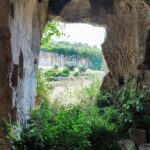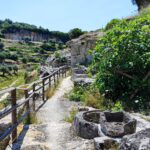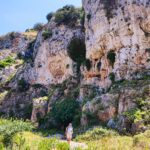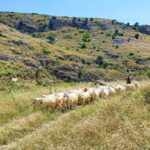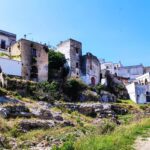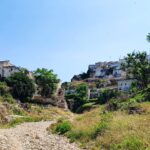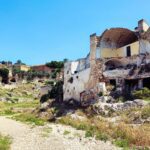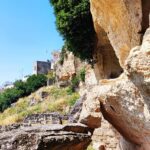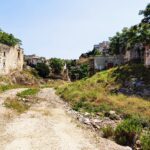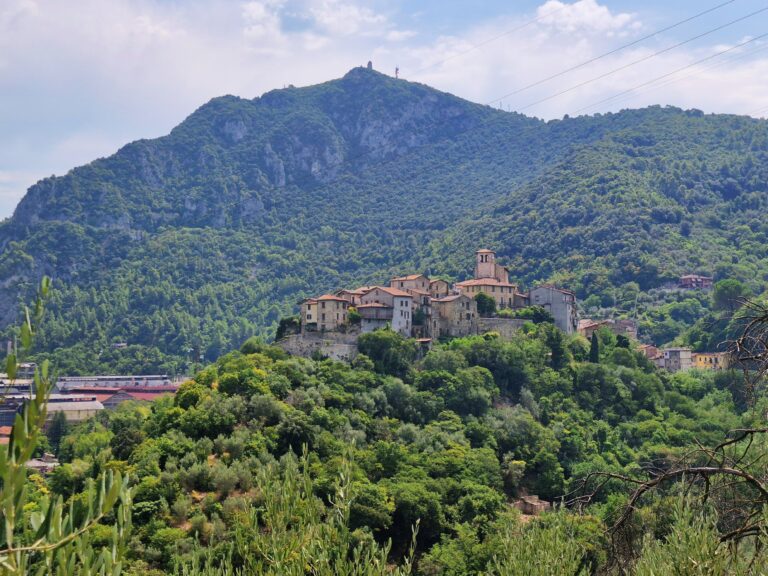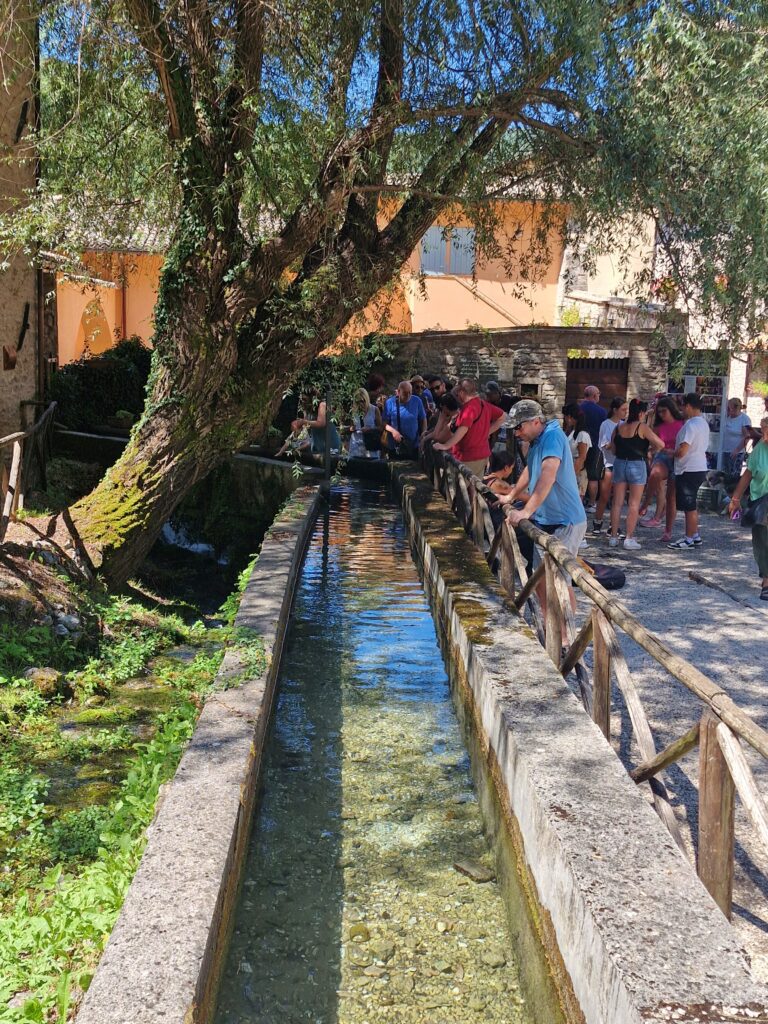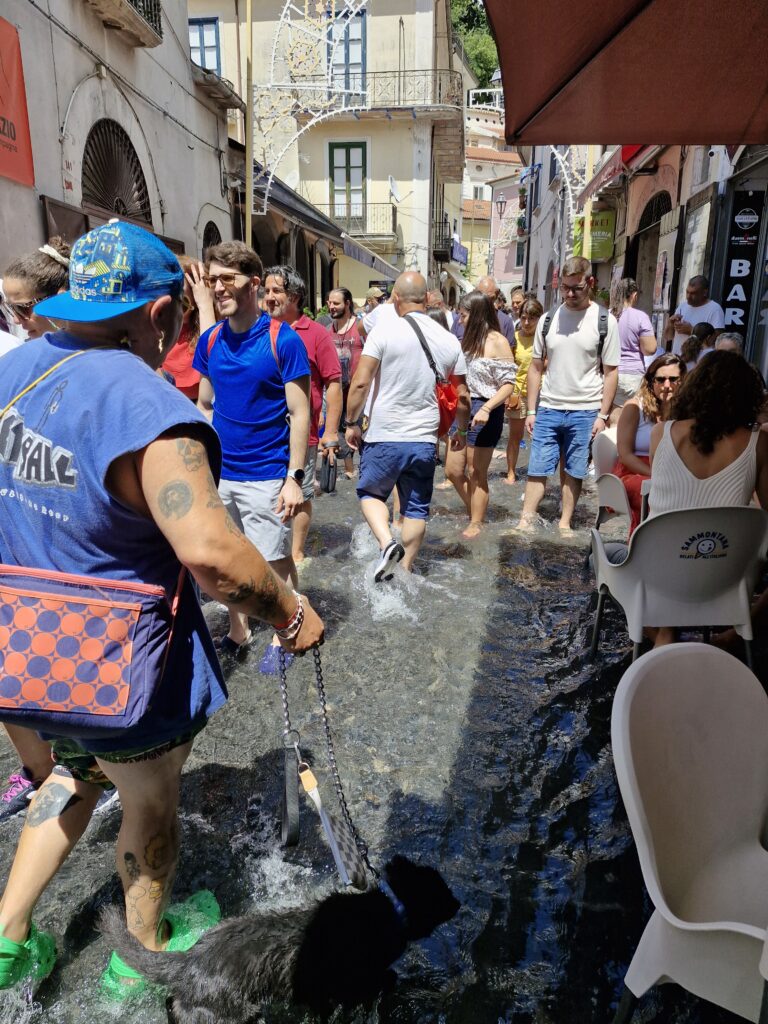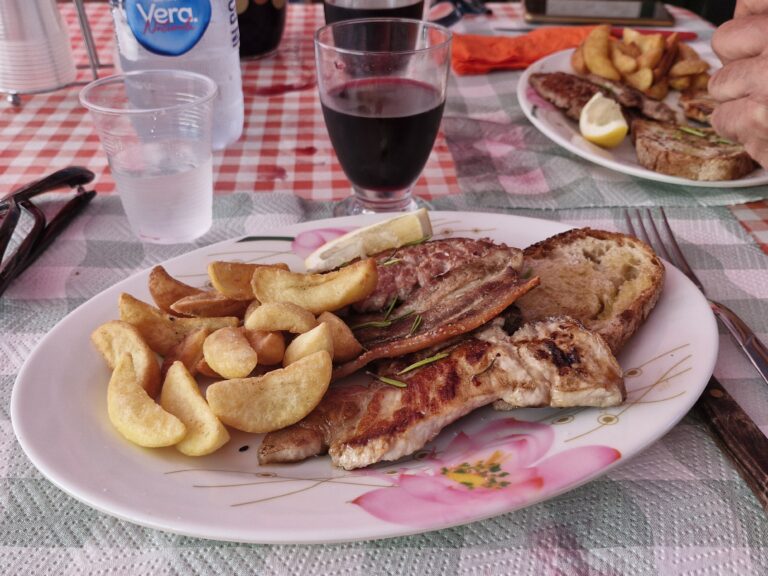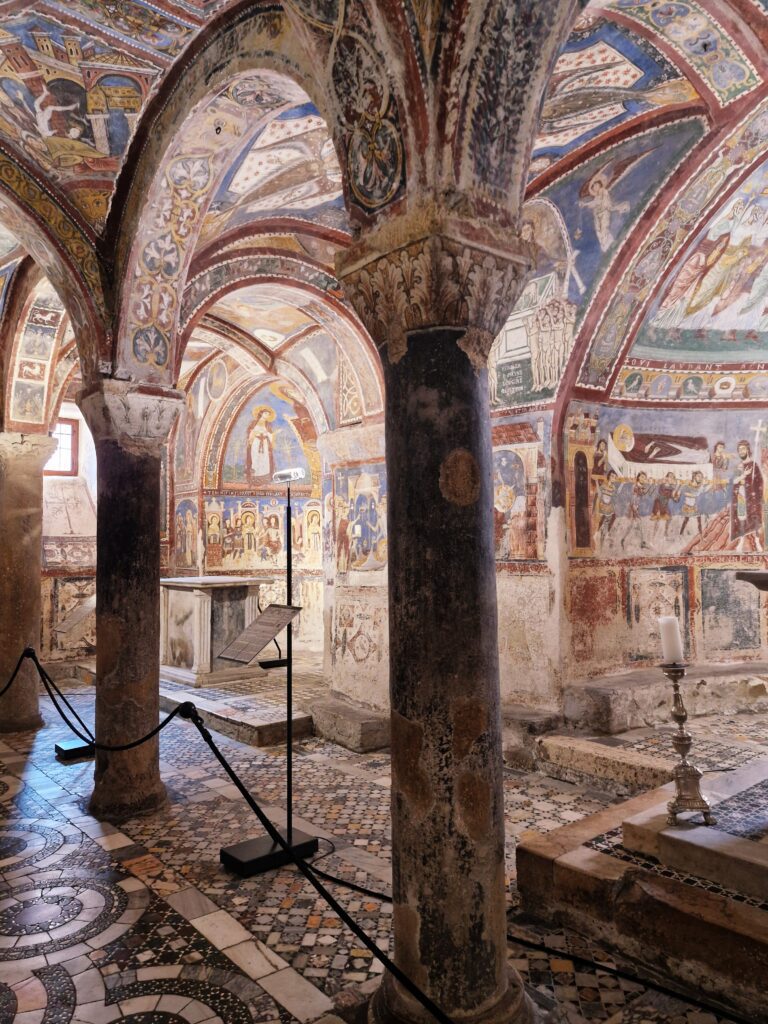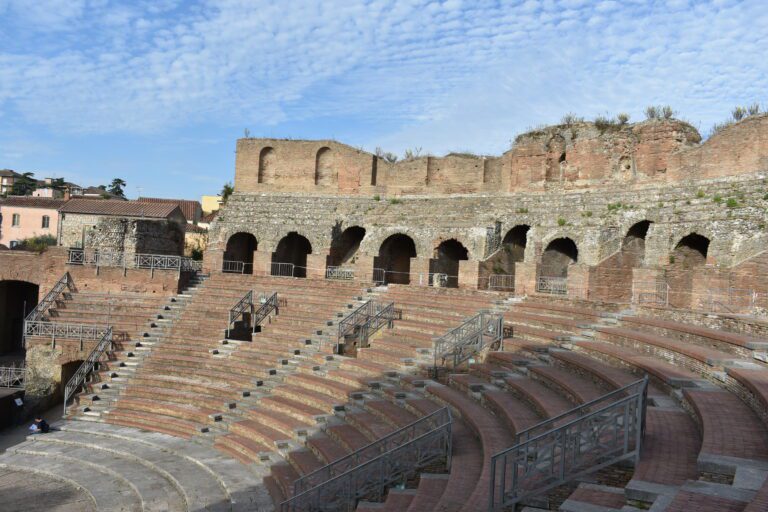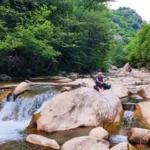Ginosa is town located on the border of Puglia and Basilicata. Ginosa is famous for its antiquity and the canyon, Gravina di Ginosa.
In the town, founded around 1500 BC (the exact date is unknown), traces of human activity from the Neolithic period have been found. Additionally, the Greeks, Romans, Byzantines and Normans passed through the area of Ginosa.
What to see in the town.
Ginosa is a small town, so there’s not much to see. One of the things worth seeing in the town itself, is a Norman castle built around 1080. In the 16th century, part of the original castle was demolished in order to transform it into a noble palace. From the castle, along Via Matrice street, you’ll reach the church of Our Lady of Ginosa, built in the mid-16th century in the Gothic-Renaissance style.
From Piazza Orologio, where the clock tower stands, there’s a view of the center of Ginosa, which resembles a classic Hellenic village. And that’s pretty much it.
Besides olive oil and wine which Ginosa is also famous for, the Gravina di Ginosa, a canyon that was created by rains and meteor bombardment is the main reason why people visit Gravina. It forms a horseshoe shape and surrounds the city for more than 10 km.
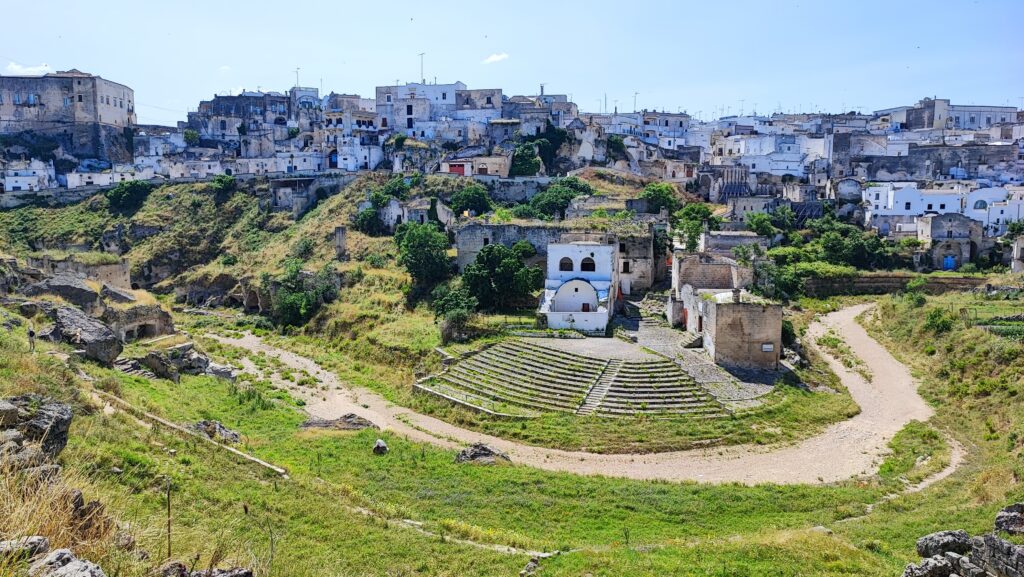
How to get to the Gravina di Ginosa Canyon.
Theoretically, getting to the gorge is easy, but we had to use our friend called GPS. We parked in town and then walked along the sidewalk towards the canyon. After reaching the structures supporting the bridge, we hesitated for a moment, because, of course, you won’t find any signposts there. We decided to rely on GPS, and after passing a house that reminded me so vividly of what I had seen in Morocco and the Middle East, we ended up in the canyon. Gravina di Ginosa is wide, i.e., the walls are quite far apart, so the gravel and stone road in the gorge is wide. And there is absolutely no shade there.
Inside the Gravina di Ginosa canyon there are two rock villages: Rivolta with prehistoric remains and Casale.
As we approached the bend of the canyon, on the right side we noticed the walls of old buildings and olive trees, which according to historians, testify to the presence of ancient crops. To see what made the canyon famous, you still have to walk a few hundred meters.
Follow the road until you get to the canyon walls in front of you, turn right and you’ll reach the remains of the settlement of Rivolta. Arranged on 5 levels, 66 caves carved into the rock were the dwellings of the tyroglodytes, who dropped in to visit each other using a network of stairs that they also carved into the rock wall.
All the caves, or rather houses, have chimneys, and some of them also have water tanks, stoves, shelves, and cellars. The troglodytes were not as primitive and unintelligent as the meaning of the word suggests, because all the caves have entrances from the south. This means that the inhabitants of the settlement used natural heating in the winter.
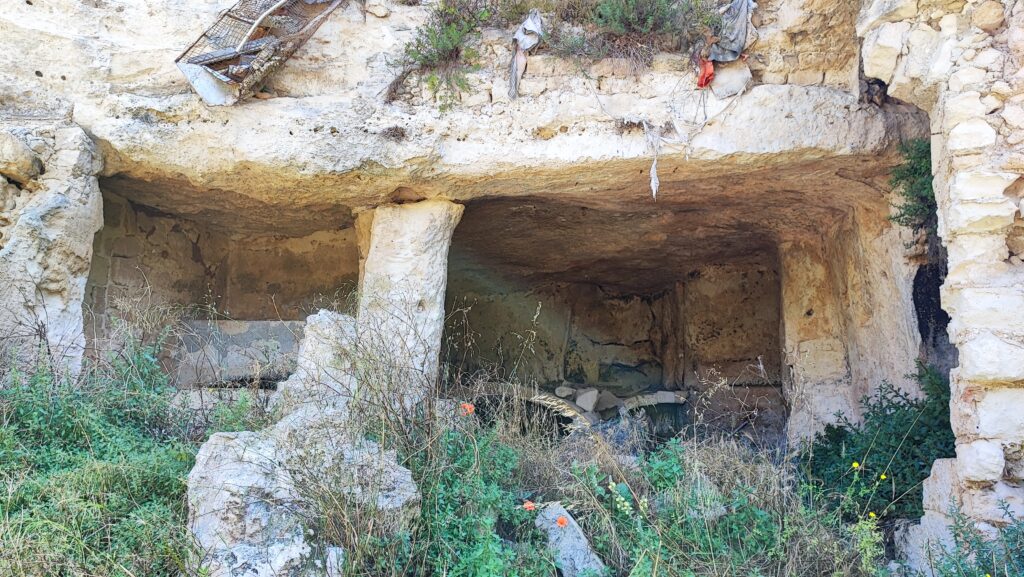
Another unique feature of the cave houses is the system that allowed rainwater to be collected through channels. The water was directed into the caves and used for cooking, caring for animals, and watering crops. The troglodytes not only built houses, but also cave churches in the settlements of the Gravina di Ginosa canyon: three of them are Santa Barbara, Santa Lucy, and Santa Sofia; it was destroyed by a flood.
Is it worth visiting Gravina di Ginosa ?
In my opinion, the canyon is not a so-called tourist attraction, especially one that can be recommended to everyone. The canyon itself didn’t make a special impression on me, just a stone path among rock walls and without a single shade. Ruins are ruins, there are plenty of similar ones in Italy. In my opinion, the cave houses are interesting as an example of early urban planning.
Are they interesting enough to come to Ginosa? It’s a matter of interests, I probably won’t go to Ginosa again.
What else can you see in Ginosa apart from the canyon?
You can visit the sandy coast of the Ionian Sea. Marina di Ginosa is a famous seaside resort surrounded by a lush pine forest.
A few kilometers from the beaches is Lake Salinella, located in the Stornara reserve. Also surrounded by a pine forest, it’s a breeding ground for many species of marsh birds. Not far from the lake, since the 16th century, there has been a square tower, Torre Mattoni. Situated on a dune 300 meters from the sea, it served as a watchtower and defense against Saracen raids.
A few practical tips before visiting Gravina di Ginosa:
- A hat is essential, unless you love the sun (I don’t) if you go there in the summer
- The path is generally easy and flat (except for the approach to the cave houses), but it’s good to have comfortable shoes, because smaller and larger stones can damage your feet
- Take water and apply sunscreen


